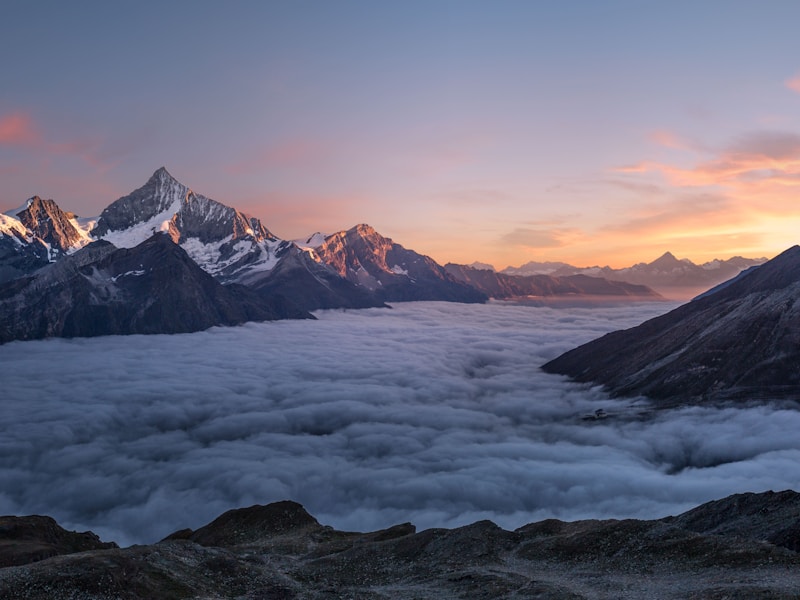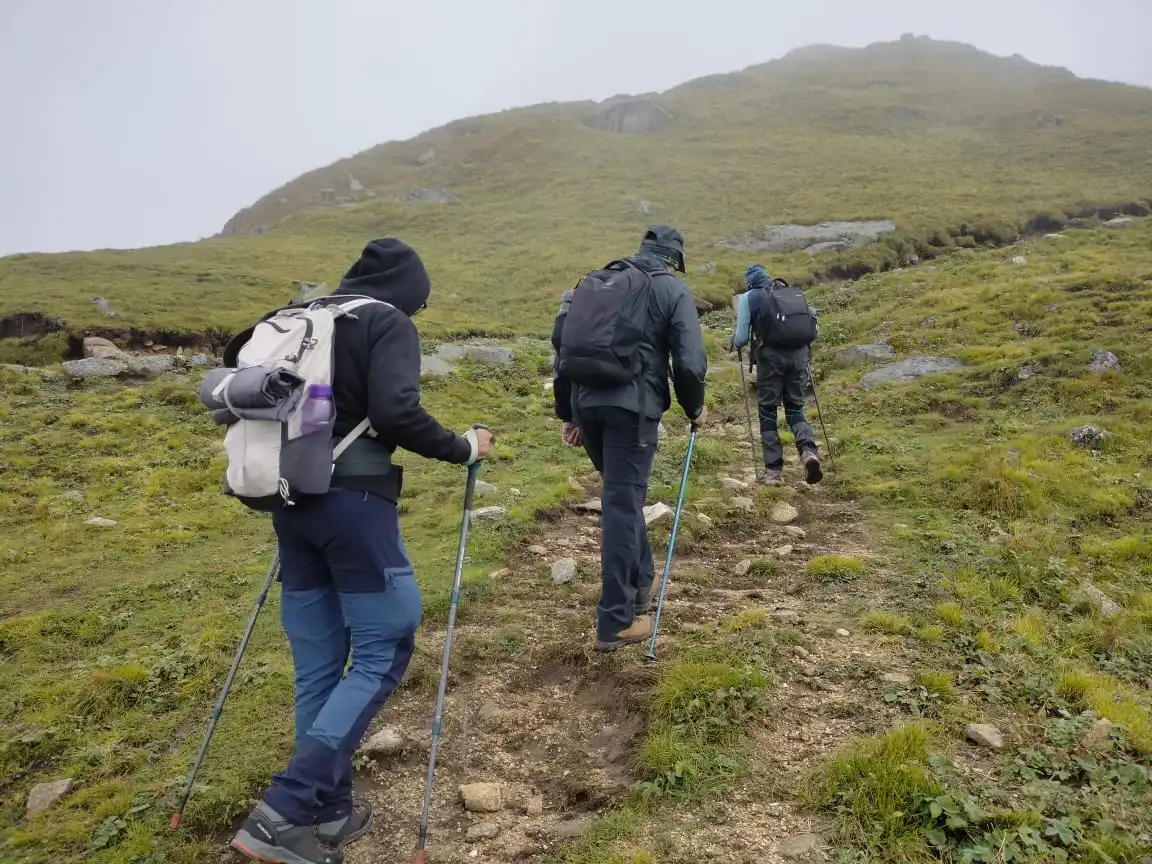Healing And Rejuvenating In The Himalayas: Adventure Therapy Treks
Adventure Therapy Treks

Stress and anxiety take center stage in the modern world, where people are bustling with their demands. This is where the Adventure Therapy Treks bring solace and transformation to human minds. These treks delve into healing and rejuvenation, offering a blend of physical challenges, awe-inspiring natural beauty, and reflective practices.
Moreover, trekkers get encouragement for their personal growth, resilience, and self-awareness while pushing through the physical limits. Every moment of these treks is a stepping stone towards holistic healing, whether mindfulness practices among rustling leaves or group discussions under the star-studded sky.
Adventure therapy comes from psychology, outdoor education, and experimental learning. It shows that challenging outdoor activities are a metaphor for life's challenges, allowing trekkers to process their emotions. While the term might be new in this era, the essence of using nature and adventure has deep historical and cultural roots.
Different Native American tribes incorporated vision quests and nature-based rituals to aid in personal growth. Similarly, forest bathing in Japan reflects an age-old healing power of nature. India has had a rich history of spiritual sanctuary in the Himalayas for centuries, with meditation, yoga, and Ayurveda.
It is crucial to recognize that it builds upon ancient wisdom while incorporating modern psychological insights. Let's dig deeper into the therapeutic approaches with Himalayan treks offering participants a unique opportunity to experience personal transformation.
Adventure Therapy Treks: Long duration treks
Himalayan Treks can be considered as adventure therapy treks depending on the individual and their specific needs. It generally involves outdoor activities and challenges which are meant to promote personal growth and self-discovery.
These treks can range from 4-5 days to even longer than that as per the goal of the individual. The duration is determined by factors like difficulty level, distance to be covered and desired experiences. These treks offers unique opportunity for people to immerse themselves in the stunning natural beauty of the Himalayas and engage in therapeutic activities. Here are a few examples-
Annapurna Circuit Trek, Nepal:
This mesmerizing trek takes people through the traverse landscapes, lush forests, and terrains as an opportunity to engage in yoga sessions and group discussions led by experienced guides. The serene surroundings provide a perfect backdrop for introspection and personal growth. This trek is generally for 10 nights at an altitude of 17769ft.
Starting point- Kathmandu
Kuari Pass Trek, India:
The trek offers panoramic views of the Nanda Devi range in the Indian state of Uttarakhand. It comes with the physical challenge of ascending to high altitudes and engaging in guided meditation, journaling, and sharing circles. The amalgamation of adventure and mindfulness creates a holistic experience that rejuvenates body and mind. This trek is for 5 nights at an altitude of 12516 ft.
Starting point- Haridwar
Everest Base Camp Trek, Nepal:
Everyone must have dreamt of trekking to the base camp of the world's highest peak. However, it is one of the best adventure therapy treks for much-needed physical endurance and self-discovery. Many trek organizers incorporate guided meditation sessions and discussions on personal growth, allowing trekkers to connect with themselves amidst the Himalayan splendor. This trek is for 11 nights at an altitude of 18513 ft.
Starting point- Manthali Airport, Ramechhap, Nepal
Brahmatal trek, India:
This trek surrounds the glacial lake in the stunning Nanda Devi and Trishul peaks. It includes strategies, stress management, and team-building sessions. The serene environment and the challenges of the trek provide an ideal setting for fostering resilience and self-awareness. The trek is for 5 nights at an altitude of 12,000 ft.
Starting point- Kathogdam
Langtang Valley Trek, Nepal:
The trek offers a blend of cultural exploration and natural beauty near the Nepal-Tibet border. Trekkers engage in reflective practices like silent walks, meditation, and creative workshops. The immersive experience fosters a deeper connection with oneself and the environment. The trek is for 10 nights at an altitude of 12460 ft.
Starting point- Kathmandu
Adventure Therapy Treks: Short duration treks
There are some 2-3 days trek in the Himalayas as well which can be identified as adventure therapy treks. Following are the examples-
Kuppar Bugyal Trek: This trek is less explored in the Shimla region amidst forests covering range of moist deodar trees or coniferous forests. Individuals can also find rhododendron forests beside the popular hill station. The trek continues across the Himri pass from lagh valley passing through the town of Manali. It is located at an altitude of 10498 ft where the basecamp is at KharaPatthar(75km from Shimla).
Pandava Cave Trek: This trek is located atop Mount Karol which is one of the oldest cave located in Himalayas. Individuals generally trek through the Shivalik ranges uncovering different mysteries and mythology hidden inside the forests. The trek generally ranges for 7km in the view of town Solan at an altitude of 7175 ft where the basecamp is at Solan(46kms from Shimla).
How are therapy treks different from regular treks?
Therapy treks, or wilderness or adventure therapy, means integrating traditional therapy techniques with outdoor activities. These activities can be hiking, camping, and other adventure sports. Mostly, therapists or mental health professionals who specialize in outdoor therapy. Unlike regular treks, these treks focus on participants' emotional, psychological, and spiritual well-being.
Therapy treks vs Regular treks
| Therapy treks | Regular treks |
| Incorporate elements of outdoor adventure with therapeutic interventions. These treks are designed to promote mental and emotional well-being, personal development, and self-reflection. | Recreational adventures that involve hiking, climbing, or exploring natural landscapes. These treks are popular among outdoor enthusiasts who seek physical challenges, a break from their daily routines, and an opportunity to connect with nature. |
| Guided by trained professionals such as therapists, counselors, or outdoor educators who integrate therapeutic techniques into the trekking experience. | Regular treks can be organized by tour companies or done independently with a group of friends or family. |
| The guides are often trained therapists or counselors who have experience in outdoor therapy or adventure-based interventions. They possess the skills and knowledge to create a therapeutic environment, facilitate meaningful discussions, and provide emotional support to participants. | The guides may be experienced outdoor enthusiasts or tour operators who focus on logistical aspects such as navigation, safety, and equipment. |
Why is therapy such a trending need in society?
In recent years, therapy treks have become trending in society because more and more professionals are keen to address their mental health concerns. It improves their overall well-being and is a necessary resource in today's society.
Awareness: Mental health issues are increasing in the modern generation, along with destigmatization. These issues were seen as a sign of weakness in the past years, and people did not care. However, as society has developed and recognized that mental and physical health go side by side, they are willing to acknowledge it. Nowadays, people help people who are struggling and need help.
Fast-paced modern life: The younger generation is prone to a high-stress nature, and many individuals find themselves overwhelmed by work demands, relationships, and personal responsibilities. The constant pressure to succeed and fear of failure affect mental health. Therapy treks provide a safe place for everyone to explore their thoughts and emotions along with mechanisms and develop resilience in the face of stress.
Rise of technology: Social media addiction and advancements in gadgets or applications negatively impact society. It has created new challenges for mental health besides serving as the fastest means of communication and information. The continuous comparison to others, cyberbullying, and the addictive nature of social media affect self-esteem and contribute to anxiety and depression. Therapy treks help everyone to navigate these challenges and develop a healthier relationship with technology.
Accessibility: Therapy treks have become accessible with the advent of teletherapy and online counseling platforms. Every person can undergo these therapies from the comfort zone of their house. These have removed barriers like transportation, unavailability of therapists being seen in a counseling office, etc.
Sense of validation: Therapies give a sense of support to all individuals where they can openly express their thoughts and emotions. There is no one to judge their feelings or thoughts because therapists are non-biased and empathetic listeners. They offer guidance and help people cope with their challenges. This sense of validation is empowering and healing, irrespective of age.
Who should opt for adventure therapy treks?
Adventure therapy treks are one of the most exciting and unique ways to combine the benefits of outdoor adventure with therapeutic interventions. These treks are for individuals who must overcome challenges, build resilience, and improve their well-being. Let's see them in detail
Individuals Seeking Personal Growth:These treks are suitable for those individuals who seek to embark on a journey of personal growth. It can be anyone stuck in their life, facing emotional or mental health issues, or wanting a new perspective in life. Adventure treks provide the perfect opportunity for self-discovery and improvements by venturing into new places. The challenges faced during the trek help individuals exit their comfort zones and develop new skills or coping mechanisms.
People Dealing with Stress and Anxiety:In today's fast-paced world, working professionals or students deal with stress. The adventure treks offer some unique ways to combat these issues. They get an amalgamation of physical activity, exposure to nature, and the much-needed support of a therapeutic environment. It works wonders to reduce the stress levels and promote relaxation. The serene and peaceful surroundings of nature have a calming effect on the mind and help individuals find inner peace and tranquility.
Individuals in Addiction Recovery:These treks benefit people in addiction recovery through a safe and supportive environment where individuals focus on their recovery. However, this recovery takes place while engaging in challenging physical activities. All the physical exertion and connection with nature help people to reconnect with themselves and build self-esteem. It develops healthy coping mechanisms by providing opportunities for teamwork, communication, and problem-solving skills necessary for long-term recovery.
Youth and Adolescents: Adventure treks are effective for youth and adolescents facing several life challenges. These treks give them a break in everyday life and offer a supportive environment for personal growth. Engaging in physical activities and overcoming all the challenges during the treks gives self-confidence and improves decision-making skills. It fosters a sense of achievement among all youths at an early age. Moreover, the social aspect of the treks allows the participants to form meaningful connections with their peers and develop social skills.
Corporate Teams and Professionals:Apart from the individuals seeking personal growth, adventure treks benefit corporate teams and professionals. These treks are open to collaboration and unique team-building skills or experience that helps boost communication and problem-solving skills. The challenges faced during the treks require teamwork and help people break down several barriers or improve relationships. The overall team dynamics increase with the experience of overcoming obstacles together. Corporate people can spend time in a natural setting, profoundly impacting team cohesion and productivity.
In conclusion, embarking on the adventure treks in the Himalayas offers a transformative journey that intertwines the breathtaking beauty of nature with profound inner healing. The majestic Himalayan landscape provides more than just a picturesque backdrop. It become active participants in the therapeutic process, offering solitude, challenge, and a sense of connection to something greater than oneself. Moreover, the serene and untouched Himalayan environment is a sanctuary for introspection and healing. Participants from these treks emerge physically revitalized and mentally rejuvenated, armed with a newfound sense of empowerment.
In a world where stress and digital distractions abound, the adventure treks in the Himalayas act as the alchemy of adventure, nature, and therapy. Ultimately, these treks stand as a testament to the natural world and human well-being, reminding us of the intrinsic link to the untamed beauty of the Himalayas.
Similar Blogs
Related Treks & Activities

Hampta Pass Trek
Hampta Pass Trek 2025 - Chandratal Lake Trek | Moxtain

Dayara Bugyal Trek
Dayara Bugyal Trek 2025 - 6 Days Trek | Moxtain

